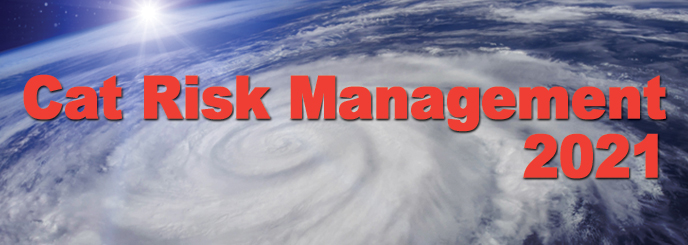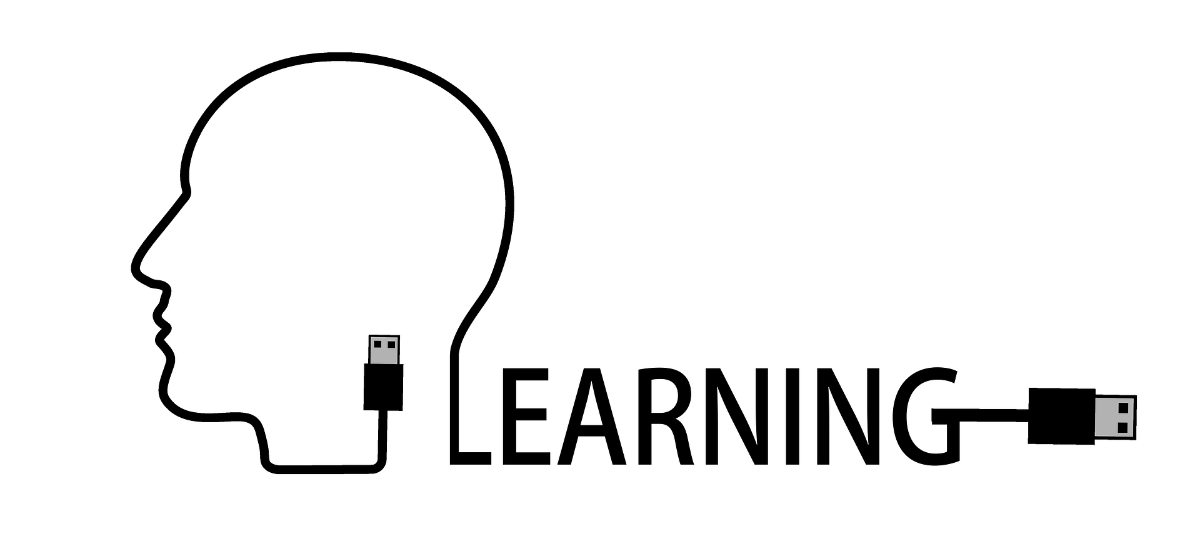
Welcome to our latest newsletter, the first one this year, which we hope will keep you updated on our latest developments and provide you with some insight into our community.

Mission Statement: ODS should be the standard used for exposure data, result outputs and contract(s) terminology for the re/insurance Industry and other interested parties in catastrophe modelling and exposure management across all classes of business.
Plans for the development and expansion of ODS remain ambitious for 2021 following a busy 2020 that contained multiple market events and focus on increasing adoption.
The main goals for ODS in 2021 are to:
- Expand its scope to support an open data standard for liability classes of business. The standard will be developed through a series of workshops during Q1 and Q2 made up of key market practitioners in these classes. This initiative is aligned with a ‘minimum standards’ project being run by Lloyd’s.
- Implement the Open Results Data (ORD) outputs into the Oasis Platform and package this up with OED and modelling files. The ORD outputs will be available alongside the current Oasis outputs by the end of Q2.
Oasis is also working with the World Bank to implement its Risk Data Library into ODS. This will introduce standardised vulnerability, hazard and modelling data schemas aimed at developing economies, which will highlight how ODS is not limited to the re/insurance sector.
Oasis continues to curate ODS and chair the steering committee that consists of members from brokers, re/insurers and modelling companies. ODS is not an Oasis standard, but is an open and transparent standard developed by the market, for the market and therefore not owned by a single commercial entity.
More information can be found on the GitHub Repository, and short videos and FAQ’s are available on the website.
Collaboration is key so get involved!
Technology Update
In 2020, Oasis released an evaluation version of the ‘Oasis At Scale’ prototype to demonstrate running Oasis in a redesigned, distributed architecture. This allows the main processes in analysis to be distributed across a pool of worker nodes in a dynamic manner, meaning that computer resources can be assigned dynamically according to needs. The work here will form the foundation of the full Oasis At Scale project work in 2021, where we will utilise Kubernetes and Microsoft Azure to build a full, reference architecture to demonstrate how Oasis can be used in production in a scalable manner.
Oasis also had its first independent code review in 2020, which was commissioned independently and undertaken by the Numerical Algorithms Group (NAG) in Oxford. The review looked specifically at ktools and confirmed overall good performance and scaling with no major improvements possible with the existing methodology. However, the review did confirm some of the performance bottlenecks which we were already aware of and were actively working on alternative methodologies. Specifically, the review highlighted the financial module calculations (fmcalc) as being the rate-determining step in the majority of analyses.
We have since redesigned the financial module using Python and some specific numerical libraries (nuimpy and numba) to deliver significant improvements in performance. The improvements are specific to the type of analyses performed, depending on the size of the portfolio, number of samples, and complexity of financial conditions but in the tests that we have undertaken, we have seen financial module improvements of 50x to 400x, leading to overall performance improvements of 10x to 50x, with better comparative performance on the larger, more complex analyses.
The new financial module is now built into the Oasis LMF as of the latest release 1.15.1.
Climate Change Engagement
UK Centre for Greening Finance and Investment (CGFI)
Oasis is part of a newly formed, multidisciplinary organisation, delivering high-impact research, tools, analytics, and information relevant to a range of financial institutions needs to achieve the vision of a greener economy. The UK CGFI will be funded by UK Research and Innovation (UKRI) and led by the University of Oxford. The goal is to:
- transform the finance sector’s ability to invest differently to promote climate and environmental action.
- demonstrate how UK science and UK finance can work together to help the global economy transition to net-zero carbon.
- commercialise new products with the help from experts in Oxford, Bristol and Reading.
- focus on a new climate conditioned cat model for Europe wind and flood.
Full press release here.

Model Providers Update
JBA Risk Management

Plugging the model gaps
JBA offers probabilistic flood modelling on a global scale – a first of its kind capability, available on the Oasis LMF platform.
Filling historical model gaps and offering unprecedented flexibility and model customisation, JBA’s modelling is brought into being at run-time rather than from pre-compiled parameters, generating probabilistic loss results for 99.98% of the world’s landmass.
Ranging from consistent 30m resolution worldwide up to higher resolution country-specific methods in key markets, it enables global flood risk assessment like never before.
This global capability is complemented by a range of climate change data, including a UK Climate Change Flood Model, which can be used to help understand possible future exposures to climate change and meet regulatory requirements.
Impact Forecasting

Our cat modelling platform, ELEMENTS 15, runs the Oasis calculation engine giving users a choice of financial loss calculation in addition to the Impact Forecasting engine. In addition, we are now supporting the OED modifier scheme for all Impact Forecasting models in ELEMENTS.
We are working on finalising the conversion of the Impact Forecasting Canada and Austria flood models into Oasis and the next models available will be Europe SCS and the Manhattan CFD blast model.
Our exposure management and data conversion tool, Impact Workbench, now has the ability to export data into an OED format allowing analysts to easily prepare OED exposure data for models in Oasis-based systems.
Guy Carpenter
![]()
Guy Carpenter currently has more than 40 models deployed on Oasis through the Nasdaq NRMC system. At this time, we are running the models on behalf of clients to support their risk management strategies. In future, we may consider licensing our models to 3rd parties once we have confidence in the stability and performance of our models on the Oasis platform. In addition, we have developed new tools to assist in the automation of model building tasks, and to handle pre- and post-processing of model exposure and results data. Guy Carpenter has adopted OED as the basis of our own internal exposure data standard to support cat modelling inter-operability.
ImageCat

UK Space Agency’s 3-year METEOR project is coming to an end with the release of data products and stakeholder presentations.
In the past few months, METEOR (Modelling Exposure Through Earth Observation Routines) introduced its novel products to a wide range of stakeholders from the country governments of Nepal and Tanzania, insurance, humanitarian, and development sectors, including the Disaster Risk Facility (DRF) at Lloyd’s, the World Bank, and UNICEF. METEOR products (including Oasis compliant OED format exposure data for 47 ODA countries, hazard maps for Nepal and Tanzania, and protocols) are now accessible at the METEOR Website and Map Portal. For information on the project contact Dr. Colm Jordan (British Geological Survey) or Dr. Marina Mendoza (ImageCat).
Fathom

After a busy start to 2021, Fathom has launched its latest flood hazard data and catastrophe model for the UK. Available through the Oasis Loss Modelling Framework, Fathom-UK CAT represents over 170,000 synthetic flood events spanning 10 millennia. With a collection of over 10,000 damage functions, the model is ideal for professionals wanting to accurately differentiate between damages for a variety of different building types including residential, commercial and industrial - for direct (e.g. structural and contents) and indirect (e.g. ALE and BI). If you are interested in learning more about Fathom’s model for the UK, you can contact them directly here.
CatRisk Solutions

CatRisk Solutions Ltd has expanded its earthquake risk model coverage to more than 55 countries in Africa, the Middle East and Asia/Asia Pacific. Our new addition in Asia include Afghanistan, Bangladesh, Hong Kong, India, Indonesia, Malaysia, Myanmar, Nepal, Philippines, Singapore, South Korea, Taiwan, Thailand, Sri Lanka and Vietnam. All these models have been fully integrated into Oasis and are ready to be launched onto the Nasdaq Risk Modelling for Catastrophe (NRMC) platform. A new disaggregation tool has been developed and deployed to enhance data quality and to reduce location uncertainties for aggregate exposure data. Exposure of various geographical resolutions could now be handled by our models. We have also introduced a new approach to better represent seismic hazard in regions with low seismicity.
Global Earthquake Model (GEM)

The GEM Colombia model is based upon GEM’s regional South America model, funded by the Swiss Re Foundation (SARA 2016), and substantially updated with GEM sponsor support (SARA 2020). Dozens of local scientists and engineers participated in the development, resulting in an OpenQuake risk model for ground-up loss from ground shaking for residential, commercial, and industrial buildings. The hazard model captures the highly complex subduction tectonics, and the vulnerability model captures local construction practices and costs and level of enforcement of seismic regulations. The new commercial versions provide insured losses, and will be hosted by the Nasdaq Risk Modelling for Catastrophes Platform (in Oasis LMF) and AIR Touchstone. Learn more about GEM's products here.
CoreLogic

CoreLogic is proud to announce the release of its Japan earthquake model on the Oasis Loss Modelling Framework. It captures the unique aspects of Japan modelling throughout all model components. For the hazard, CoreLogic covers all components of loss: ground shake, liquefaction, landslide, fire following, sprinkler leakage and tsunami. This is coupled with advanced capture of vulnerability, including secondary modifiers that can be combined to create thousands of unique vulnerability curves. Where this exposure information is unknown, CoreLogic is using data analytics and expertise to implement ‘smart defaults’ to better capture a buildings’ vulnerability. CoreLogic has worked with the stewards of the Open Exposure Data (OED) format to implement the Japan specific insurance conditions within the Oasis LMF financial model.
Risk Frontiers

Risk Frontiers HailAUS detailed Loss Model is now fully supported and deployable via the Oasis Loss Modelling Framework and available commercially via Nasdaq’s Risk Modelling for Catastrophes platform. Now at version 7.1, HailAUS rests on two decades of development and uses Risk Frontiers’ own High Storm Potential Index to describe the probability of hailstorms nationwide. The 50,000-year stochastic event set is built from the Bureau of Meteorology’s radar network, internal archives of historical hazard events and Risk Frontiers’ PerilAUS database, along with reanalysis climate variables. It calculates losses for Residential, Commercial, Industrial and Motor portfolios from exposure inputs at address, postcode or CRESTA level.
For further information please contact:
Dr Ryan Crompton – ryan.crompton@riskfrontiers.com, or
Dr Foster Langbein – foster.langbein@riskfrontiers.com
Spotlight on

ReQoncile: The Industry Standard Library is Born
The uptake of e-trading platforms is will be one of the top drivers of change in the (re)insurance industry for the next decade ([1]): yet a few challenges remain. The reconciliation of various, often overlapping or incompatible, data standards and the lack of automated and intra- and inter-connected workflows are a few examples of such issues.
Data should flow seamlessly from ingestion through the catastrophe model process; the output should be integrated with pricing and portfolio management engines and should be easily exchangeable both internally and externally -- where needed -- with limited human intervention and without losing fidelity in the process.
A plethora of initiatives have sprawled in the last two decades to address such issues, but there remains a lack of consensus on various topics, including clarity on the definition of insurance data standards, if there could even be a unique reference point and if data standards and operational platforms should be open source or for-profit. In addition, there’s also a lack of transparency on what the proposed standards are and what tools should be used to convert the data from one format to another.
ReQoncile is a new initiative -- curated by the unified data analytics and risk platform provider QOMPLX -- with the goal of creating awareness of the various available standards, schema, and tools in the insurance industry and its closest impacting adjacent fields. QOMPLX’s interest in supporting standards stems from its work in developing its Q: HELM platform ([2]), a catastrophe modelling as-a-service offering, providing easy access for the insurance industry to a wide variety of models, data, and related services.
The ReQoncile.io site is intended to be a publicly available, curated registry of standards initiatives, data schemas and data translation and modelling tools. The effort also plans to provide a library of articles, academic papers, event-listings, and to perform surveys across the industry to gauge what are the top relevant issues and topics.
An Advisory Board has been established -- to ensure that a broad segment of the industry is represented in its governance -- which thus far includes recognised industry leaders such as Dickie Whitaker, CEO at Oasis LMF, Mark Cravens, an industry leader in catastrophe risk management, and Robin Merttens, co-founder, InsTech London.
The ultimate aim is to create a central registry where standards “meet,” a go-to-place for practitioners to identify what is available, what are the best solutions for their needs and how to use them, as well as if there are duplication of efforts and if there are gaps to fill.
For the initiative to be successful it needs to be useful to the industry. ReQoncile can allow effective, organic growth via a robust network of industry participants and advisors, and so we invite practitioners in this field to become members of ReQoncile – The Industry Standard Library and to actively collaborate with it, to create a consensus-driven initiative.
([1] InsTech London, Robin Merttens and Puneet Bharal - E-Trading Platforms: Challenges, Opportunities and Imperative, Feb 2021 (https://www.instech.london/insight/e-trading-platforms-2021-challenges-opportunities-imperative)
[2] (https://www.qomplx.com/q-helm-enhanced-catastrophe-modeling/)
Partner News and Webinars

Will you be attending the RAA 2021? Then join SwissRe, Aon and Zurich's session on the 24th March at 2.50pm EST/6.50pm GMT.
"Time for Open Catastrophe Modelling is Now! Need and Experience with the Oasis Model Definition Format and OpenData Standards"
Speakers:
Iwan Stalder, Head of Accumulation Management in Group Risk Management, Zurich Group
Beat Aeberhardt, Head Cat Perils R&D, Director, Swiss Re Institute, Swiss Re Management Ltd
Adam Podlaha, Head of Impact Forecasting, Aon Impact Forecasting
Lukas Braun, Catastrophe Model Developer, EMEA, Aon Impact Forecasting
Šárka Černá, Head of Product Development EMEA, APAC & Canada, Aon Impact Forecasting
More about this year's Cat Risk Management Event 2021: https://www.reinsurance.org/CatModeling/

- If you are receiving location data (a schedule or statement of asset values) are you checking that the locations provided are the actual locations of the asset?
- How does data which is missing a precise and accurate address line get rolled up to a portfolio view?
HERE Technologies is the world's leading location and data technology platform, powering location services in over 200 countries including China, Japan, and Korea. We seek to understand and model a world that is always moving and changing. The HERE map is a digital representation of reality – living, dynamic, and continuously updated, covering not just roads but more of the world in three dimensions. Our representation of reality is the basis to understand how people, places, and things connect.
Join us to see a viable alternative to current data cleansing providers and learn how HERE Technologies can help remove the critical error before roll-up.
Register Now AEDT Friendly Time Zone
Register Now BST Friendly Time Zone

reask is a science and technology company applying cutting-edge data science techniques to natural hazard modelling.
Join reask's webinar on "Risk Assessment and Real-time Event Response for Tropical Cyclones". Don’t miss out on this year’s live event to learn more about their next generation risk assessment and event response service HindCyc.
Oasis Events
Following current Government Guidelines, all events and conferences are held virtually but we are hoping to bring you an in-person event in the near future. Keep an eye out on the Oasis website for all upcoming webinars and events.
Should you be interested in a joint-virtual-workshop, do not hesitate to reach out to our Community Manager via email julia.arevalo@oasislmf.org to discuss in more detail.
Oasis Information Library

The Oasis Information Libray contains videos and documents discussing several fundamental aspects of modelling from the core natural catastrophe perils to the technical statistical approaches of the financial module.
Stay tuned!
The material will be made available on our website within the next few weeks.
A separate release note will be sent out.
